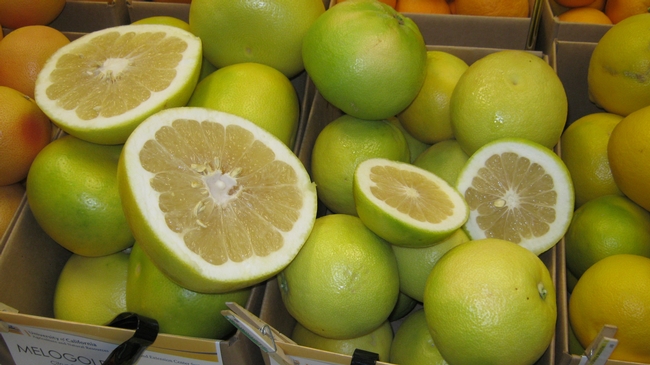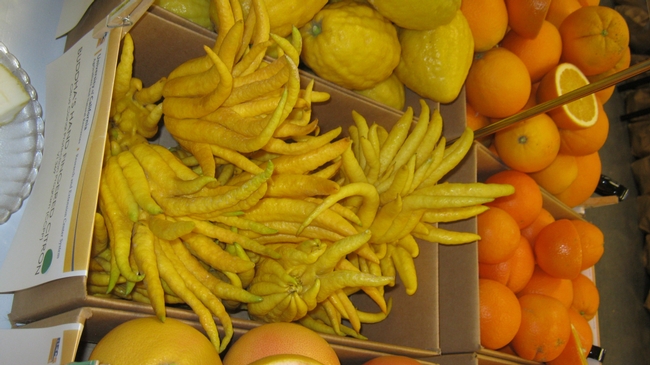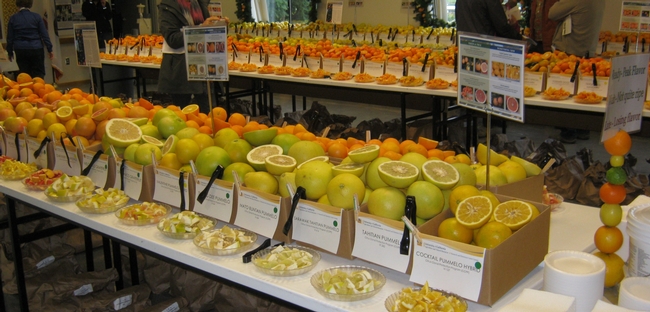- Author: Ben Faber
I used to think that you could not add enough mulch into an orchard and cause any harm. Well, I've been proved wrong a number of times. Some people have gone overboard and put on three to five feet for some reason and it causes all manner of problems, the least of which is usually just getting around in the orchard. But organic matter is the energy source that drives a lot of positive good in an orchard. It provides nutrients for the plants, as well as the microbes that protect plant health, keeps weeds down and maintains an even soil moisture content.
In agriculture, mulch has been viewed as an important input to maintain good tree health, especially in avocado orchards. That has been true up until the introduction of Asian Citrus Psyllid (ACP) and Polyphagous Shot Hole Borer (PSHB, and a close relative Kuroshio Shot Hole Borer ((KSHB))) into California. These are insects that carry disease that are lethal to trees. The ACP can carry a bacteria that causes the death of citrus trees. It has been a major cause of tree death in Florida, as well as other parts of the world. It is severely threatening the industry in that State as it does in California. It also threatens all backyard citrus wherever they are found. PSHB, on the other hand, is another insect that carries a fungal disease that threatens not just one species of tree, such as avocado, but many native trees, such as coast live oak, sycamore, willow and many other native tree species.
Initially these pests were pretty much confined to the Los Angeles Basin and south, but ACP has moved into the Central Valley, and through Ventura up the coast. Its progress has been monitored by traps. PSHB has been found in parts of Ventura County, but it is not widespread, as far as we know at this point. Both insects can be easily moved by contaminated plant material. ACP can be found in infested leaves and on fruit. Moving that material increases the likelihood of spread. PSHB can be moved in wood where it makes its galleries. Moving wood and chips, can spread this pest/disease complex.
The way to help control the spread of these two pest and their disease causing organisms is to stop the spread of materials. This means don't move material from known infested areas, such as the LA Basin into Ventura. It means know where your mulch is sourced. Ideally, if you mulch, it should be with material found onsite. Chip the trees on your property and use it there. This is a threat not only to you, but your neighbors, as well. Be a good neighbor.
For more on ACP and PSHB/KSHB see:
http://eskalenlab.ucr.edu/avocado.html
http://eskalenlab.ucr.edu/distribution.html
http://eskalenlab.ucr.edu/handouts.html
http://ucanr.edu/sites/KACCitrusEntomology/Training_Materials/Educational_Materials/
Photos: ACP and PSHB


- Author: Ben Faber
The word is getting out. If you have yellowish leaves, cupped/upright and the fruit is small, it may not be Huanglongbing (HLB), but it sure seems like all of my neighbors think so. It could be just lack of water, and in a drought, that could be the most likely cause. But there are other causes of symptoms that might be associated with HLB. Citrus Stubborn Disease causes these symptoms, but also distorted fruit and shriveled, discolored seeds, and bitter fruit like HLB. Under very hot conditions, leaves on some shoots may have misshaped, blunted yellow tips with mottling similar to the nutritional deficiencies seen in HLB. The leaves can have shortened internodes, so there's a bunchy growth habit like in zinc deficiency. Fruit are small, sparse and have early drop. Again, a lot like HLB. Even more so, though Stubborn can cause stunted, thin canopies. Misshapen fruit, though can be caused by bud mites in lemon, chimeras (spontaneous mutations) and Tristeza (a viral disease). Frost damage can add further to the confusion about symptoms that might be associated with HLB.
Citrus Stubborn Disease is a serious disease that leads to reduced fruit quality and yield. It occurs most commonly in oranges, but does show up in other citrus including lemon and mandarin. It's more commonly seen in older trees that were initially propagated with infected tissue, and growing in hot, dry environments. Unlike HLB, it doesn't lead to the death of the tree, just major loss of income. It's caused by a phytoplasma (a bacteria without a cell wall) and is spread by a leafhopper. There are other hosts like mustard and cabbage that can harbor the organism to be spread to new tissue and especially young trees. Warm winters favor the spread of the infected leafhopper, like we have had this winter.
So how do you distinguish between all the possible causes that look like HLB? HLB can be tested for as well as Tristeza. There are no commercial labs that check for Stubborn. It's basically a process of elimination then to decide to test for HLB or to think that the tree has the disease. So, know your trees and their history. Was there a freeze this winter? Know the effects and symptoms of drought and monitor soils and trees for water stress. Check for bud mite. It also takes time from the point of infected Asian Citrus Psyllid invasion to the time when symptoms of HLB start showing up in the tree. So keep your eyes open, but don't assume the worse at this point.
More on Tristeza:
http://www.ipm.ucdavis.edu/PMG/r107101311.html
Stubborn:
http://www.ipm.ucdavis.edu/PMG/r107101211.html
Images:
Misshaped fruit from Stubborn
Discolored seeds from Stubborn
Reduced canopy size from Stubborn
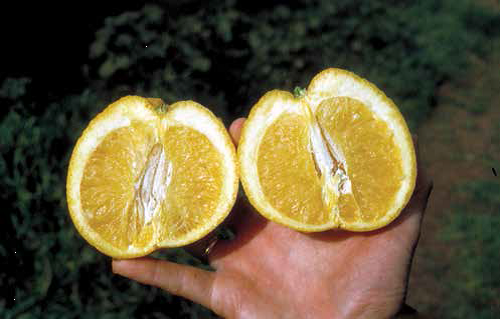
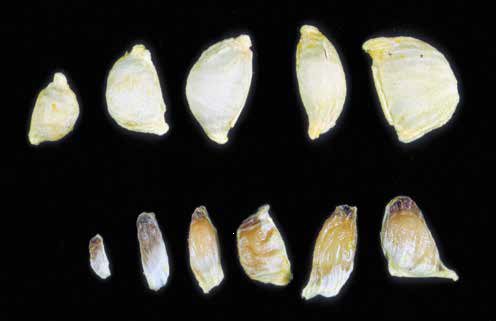
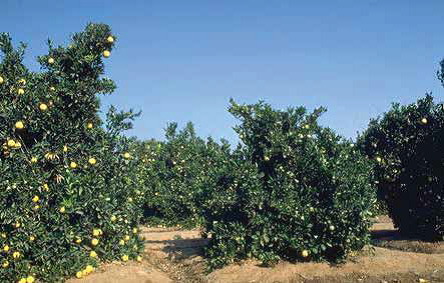
- Author: Jeannette E. Warnert
A tell-tale sign of spring in California is a flush of new leaf growth on citrus trees. Because the feathery light green leaves are particularly attractive to Asian citrus psyllids (ACP), the leaves' emergence marks a critical time to determine whether the pest has infested trees.
“We encourage home citrus growers and farmers to go out with a magnifying glass or hand lens and look closely at the new growth,” said Beth Grafton-Cardwell, UC Agriculture and Natural Resources (UC ANR) citrus entomologist. “Look for the various stages of the psyllid – small yellow eggs, sesame-seed sized yellow ACP young with curly white tubules, or aphid-like adults that perch with their hind quarters angled up.”
Pictures of the Asian citrus psyllids and its life stages are on the UC ANR website at http://ucanr.edu/acp. If you find signs of the insect, call the California Food and Agriculture (CDFA) Exotic Pest Hotline at (800) 491-1899.
Asian citrus psyllids are feared because they can spread huanglongbing (HLB) disease, an incurable condition that first causes yellow mottling on the leaves and later sour, misshapen fruit before killing the tree. ACP, native of Pakistan, Afghanistan and other tropical and subtropics regions of Asian, was first detected in California in 2008. Everywhere Asian citrus psyllids have appeared – including Florida and Texas – the pests have found and spread the disease. A few HLB-infected trees have been located in urban Los Angeles County. They were quickly removed by CDFA officials.
“In California, we are working hard to keep the population of ACP as low as possible until researchers can find a cure for the disease,” Grafton-Cardwell said. “We need the help of citrus farmers and home gardeners.”
Grafton-Cardwell has spearheaded the development of the UC ANR ACP website for citrus growers and citrus homeowners that provides help in finding the pest and what to do next. The site has an interactive map tool to locate residences and farms that are in areas where the psyllid has already become established, and areas where they are posing a risk to the citrus industry and must be aggressively treated by county officials.
The website outlines biological control efforts that are underway, and directions for insecticidal control, if it is needed. An online calculator on the website allows farmers and homeowners to determine their potential costs for using insecticides.
There are additional measures that can be taken to support the fight against ACP and HLB in California.
- When planting new citrus trees, only purchase the trees from reputable nurseries. Do not accept tree cuttings or budwood from friends or relatives.
- After pruning or cutting down a citrus tree, dry out the green waste or double bag it to make sure that live psyllids won't ride into another region on the foliage.
- Control ants in and near citrus trees with bait stations. Scientists have released natural enemies of ACP in Southern California to help keep the pest in check. However, ants will protect ACP from the natural enemies. Ants favor the presence of ACP because the psyllid produces honeydew, a food source for ants.
- Learn more about the Asian citrus psyllid and huanglongbing disease by reading the detailed pest note on UC ANR's Statewide Integrated Pest Management website.
- Assist in the control of ACP by supporting CDFA insecticide treatments of your citrus or treating the citrus yourself when psyllids are present.
- Support the removal of HLB-infected trees.
- Author: CA Dept Food
Two additional trees in San Gabriel have tested positive for Huanglongbing. The two trees, an orange and a kumquat, are on separate properties but are both within the core area in San Gabriel where 10 diseased trees were confirmed last summer. Given the close proximity, there will not be a quarantine expansion.
One of the HLB-positive trees has already been removed and California Department of Food and Agriculture officials are in the process of contacting the other homeowner to schedule tree removal. Agriculture officials are working quickly in the area.
Citrus trees in San Gabriel had already been treated for the Asian citrus psyllid within the last few weeks as part of CDFA's routine HLB response. Asian citrus psyllid populations are closely monitored in areas where HLB has been detected and treatments occur if there is a noted increase in population size. Since trees have been recently protected, no additional treatments will take place at this time. Instead, CDFA will focus on sampling extensively in the area. Much of the area has already been sampled and CDFA's lab has identified all samples from San Gabriel as high priority.
The Citrus Pest & Disease Prevention Program is working with the Los Angeles County Agricultural Commissioner's office and CDFA to develop a multi-lingual informational flier to notify residents of the significance of these finds and potential implications to other citrus trees in the area. CDFA staff will distribute this information as they go door-to-door sampling and surveying.
More information will be shared as it is available. In the meantime, the citrus industry is encouraged to keep a critical eye on all plant material moving into or out of your groves. Remove all leaves and stems, shake out picking bags, inspect harvesting equipment and educate fieldworkers. Additionally, get on board with area-wide treatments. Collectively, as a team, we can all save our citrus trees.
Residents in the area who think they may have seen ACP or symptoms of HLB on their trees are urged to call CDFA's Pest Hotline at 1-800-491-1899 or your local agricultural commissioner's office.
For more information on the ACP and HLB, please visit the CDFA ACP web site and the University of California's ACP/HLB Distribution and Management web site.

- Author: Ben Faber
Well it came again, the Citrus Tasting at Lindcove Research and Education Center in Lemon Grove near Exeter, close to Visalia and just down the road from Fresno and up from Tulare. They came, growers to see and taste new and old varieties. And then the next day, the general public with oooos and ahhhs to taste the range of flavors we call citrus. Big fruited pummelos and little fruited finger limes. Sweet, sour, not sweet, not sour, dull, and boing!. Growers came on Friday morning and the general public the following Saturday. It was crowded both days.
Citrus is wonderful, everyone knows, but it is also under dire threat of Huanglongbing and the potential destruction of this industry and the trees that are found in many backyards. So in a completely unscientific survey, I asked growers why they were there if their world was about to end. First of all, those who showed up were already optimistic about the future, so there was already a self-selection. But, growers felt like a solution would be found, science would find an answer. Driving across the Valley and through coastal counties like Ventura there are lots of new plantings......if there's water. But it's surprising how confident growers are about finding a solution. There are some hopeful signs out there like the new rootstock release from USDA of US-1516 which shows a lot of tolerance to the disease. Then there is the potential of disease tolerance in a citrus produced in Florida from a collaboration of Southern Gardens, USDA and a consortium of Universities. Yes, there is hope, but years are still needed to test and gear up for production for commercial applications.
So it was good to be around growers who have an enthusiasm for the future and looking for new planting varieites.
And they are both grapefruit, one is Melogold the one on right is Oro Blanco
Buddha's Hand citron
The Citrus Display at Lindcove Research and Extension Center, before the crowds
